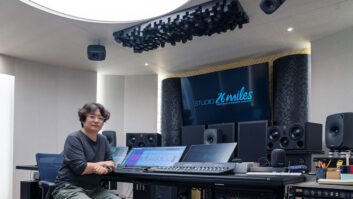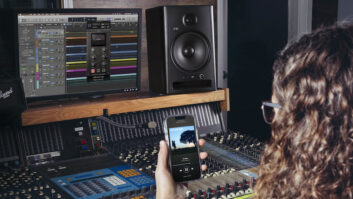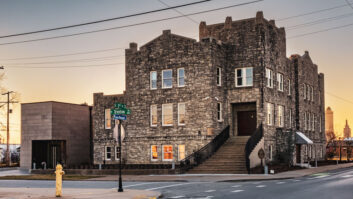Manchester, UK (November 8, 2016)—The vacated central Manchester ITV/Granada buildings in Manchester housed a forgotten recording studio—forgotten until recently when Brendan Williams, program leader of Creative Music Technology at the University of Salford, began working with Dan Parrott and Katie Popperwell to create an all-new facility—Low Four. This was no simple task: Originally built in 1956, the facility was acoustically refurbished in 1979 to be primarily used for UK television orchestral music recording, but by the 1990s, it had been decommissioned and relegated to use as an occasional green room for visiting artists.
Low Four is comprised of a large live room with a viewing gallery and a control booth. It now features an Audient ASP8024 console and is run as a commercial recording studio and multifunctional events space. “I had no idea that there had been such a high-spec, purpose-built music facility in Granada,” confesses Williams, who likened the space to the BBC’s Maida Vale studios.
Sifting through the archaeology of half a century’s worth of wiring was a huge job. “One of the on-site electricians—who’d been employed previously by Granada Studios—joked about how new technology had been literally piled on top of old in some parts of the building,” recalls Williams. “That seemed to be the case here, too.” To determine if any of the technological infrastructure was still usable, Williams enlisted the help of a few university colleagues and students. When partially removing the floor in the control room, they were met with “a writhing mass of both audio and coaxial cables. Over time, we’ve stripped pretty much everything out and established 12 more lines between the booth and the Control Room and lines to the gallery for the Low Four TV shows.”
“Bringing in the ASP8024 has improved the workflow dramatically, so we’re just in the process of putting everything we need on the bays in an intuitive fashion,” continues Williams. “This is happening stage by stage, so we can keep recording as we go. Currently the group outputs are normalized to the A/D inputs as you might expect—for multi-track capture—but I’m going to play around with using the inserts as balanced direct outputs, as it will free up the group faders for both the live to 2-track mix and better workflow with the TV style shows.”
Over a decade while at University of Salford, Williams taught a generation of music technology students using Audient consoles. “What I really value is the way that they are laid out physically. Both from a user’s and an educator’s point of view, they’re really intuitive and uncluttered. The pres are great and the EQ is really musical. If budgets allow I prefer to mix in stems and sum in the analogue domain; the ASP works really well in this context.”
Low Four
www.lowfour.tv
Audient
https://audient.com







